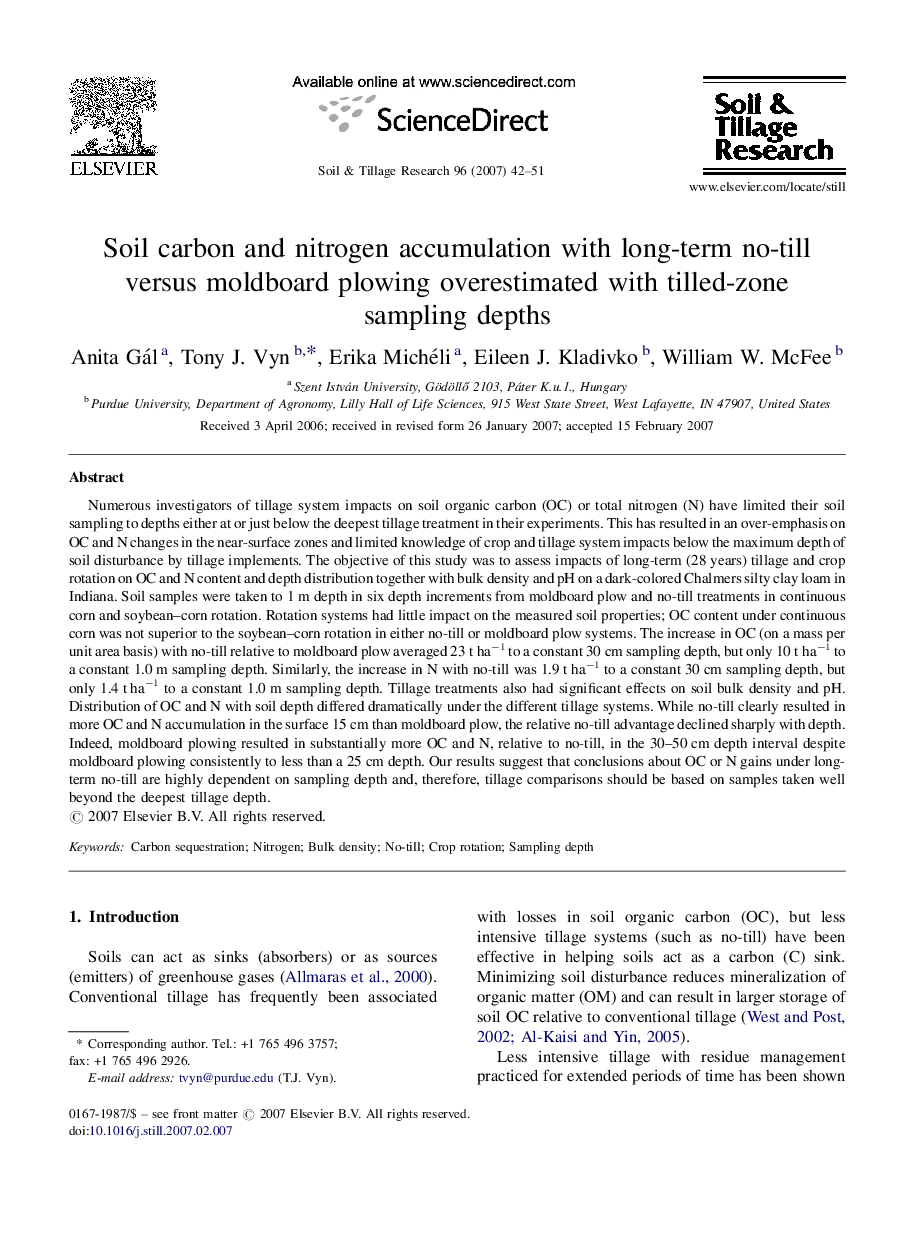| Article ID | Journal | Published Year | Pages | File Type |
|---|---|---|---|---|
| 306533 | Soil and Tillage Research | 2007 | 10 Pages |
Numerous investigators of tillage system impacts on soil organic carbon (OC) or total nitrogen (N) have limited their soil sampling to depths either at or just below the deepest tillage treatment in their experiments. This has resulted in an over-emphasis on OC and N changes in the near-surface zones and limited knowledge of crop and tillage system impacts below the maximum depth of soil disturbance by tillage implements. The objective of this study was to assess impacts of long-term (28 years) tillage and crop rotation on OC and N content and depth distribution together with bulk density and pH on a dark-colored Chalmers silty clay loam in Indiana. Soil samples were taken to 1 m depth in six depth increments from moldboard plow and no-till treatments in continuous corn and soybean–corn rotation. Rotation systems had little impact on the measured soil properties; OC content under continuous corn was not superior to the soybean–corn rotation in either no-till or moldboard plow systems. The increase in OC (on a mass per unit area basis) with no-till relative to moldboard plow averaged 23 t ha−1 to a constant 30 cm sampling depth, but only 10 t ha−1 to a constant 1.0 m sampling depth. Similarly, the increase in N with no-till was 1.9 t ha−1 to a constant 30 cm sampling depth, but only 1.4 t ha−1 to a constant 1.0 m sampling depth. Tillage treatments also had significant effects on soil bulk density and pH. Distribution of OC and N with soil depth differed dramatically under the different tillage systems. While no-till clearly resulted in more OC and N accumulation in the surface 15 cm than moldboard plow, the relative no-till advantage declined sharply with depth. Indeed, moldboard plowing resulted in substantially more OC and N, relative to no-till, in the 30–50 cm depth interval despite moldboard plowing consistently to less than a 25 cm depth. Our results suggest that conclusions about OC or N gains under long-term no-till are highly dependent on sampling depth and, therefore, tillage comparisons should be based on samples taken well beyond the deepest tillage depth.
